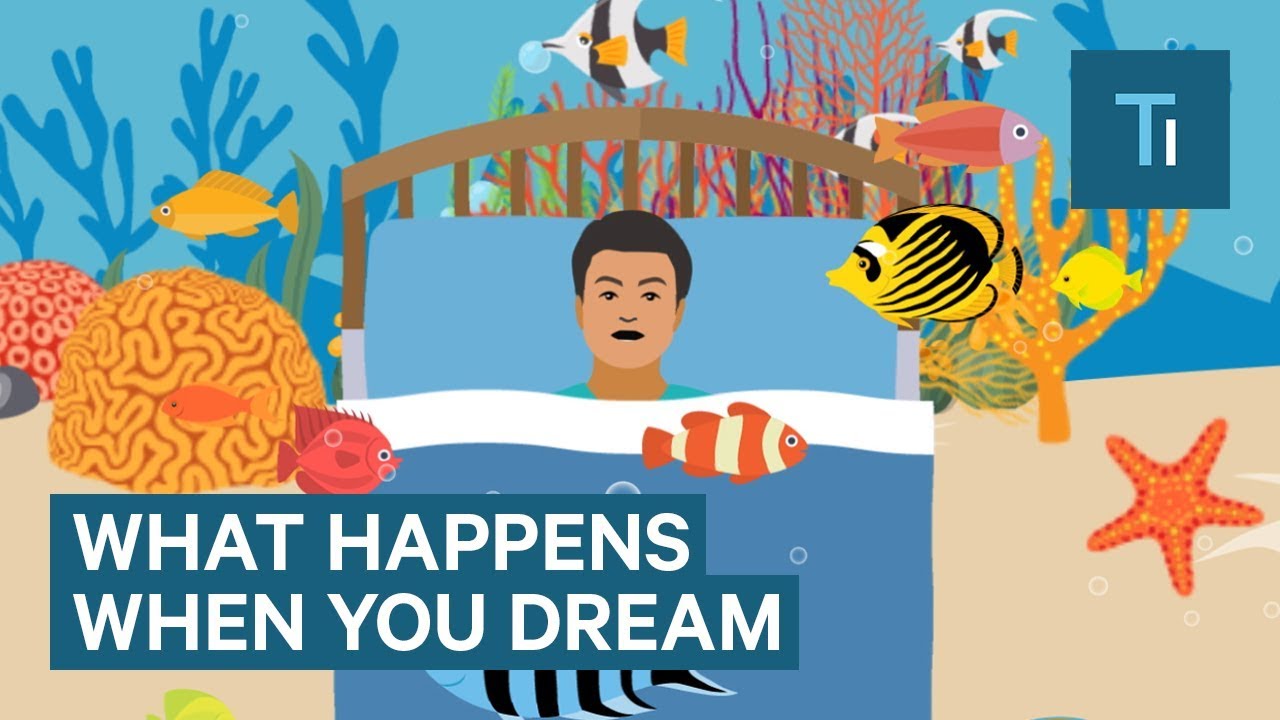What Part Of The Brain Controls Dreaming? Secrets Behind Dream Production
Dreams are stories and images that our minds create while we sleep. Dreaming has always been a mystery to scientists and psychologists, but they now understand that the brain is the primary cause of dreaming. "What part of the brain controls dreaming?" you may wonder. If you continue reading this article, you will understand what is behind dream production.
Author:Suleman ShahReviewer:Han JuOct 11, 2022132.1K Shares2M Views

Dreams are stories and images that our minds create while we sleep. Dreaming has always been a mystery to scientists and psychologists, but they now understand that the brain is the primary cause of dreaming. "What part of the brain controls dreaming?" you may wonder. If you continue reading this article, you will understand what is behind dream production.
Dreams are mental activities that can be funny, upsetting, or downright creepy, and most of them are quickly forgotten. Dreaming can occur at any point in the sleeping process.
However, REM (rapid eye movement) sleep is when your brain is most active, and this is also the time when you have the most vivid dreams. Some experts say we may dream as many as four or six times a night.
What Part Of The Brain Controls Dreaming?
The National Library of Medicine explains that the hippocampus, located deep within the temporal lobe of the brain, plays an important role in our ability to remember, imagine, and dream. On the other hand, researchers such as Johan Frederik Storm back up the claim that the cerebral cortex is in charge of dreaming. Johan Frederik Storm, MD, professor at the University of Oslo's Institute of Basic Medical Sciences, made some observations about the dreaming brain.
What he actually said was: "The 'tree crown' at the top of the cell is where both sensory input and stored memories are integrated, and this is how this understanding is achieved." Our brain cells serve as the hardware for our thinking and perception. Pyramidal neurons are the largest of these cells. They have roots, trunks, and "branches" (dendrites) like trees.
While awake, the "roots" take in information through the senses of sight, sound, and touch. But in order to understand these ideas, we need to put them in context with what else we know about the world.
Different Perspectives On Dreaming
Ancient people thought that dreams were a link between our world and the world of the gods. In fact, the Greeks and Romans thought that dreams could tell the future. But now, famous psychologists and brain experts have emerged to make things clear about this process and also suggest theories behind it.
Because of scientific and technological progress, new ideas have emerged since then. The "activation-synthesis hypothesis" is a well-known neurobiological theory of dreaming. It says that even though dreams seem to have meaning, they are just electrical brain impulses that pull ideas and images from our memories that have nothing to do with each other.
What Does Your Brain Do When You Dream?

What Happens To Your Brain When You Dream
People Also Ask
What Does The Brain Do While Dreaming?
When you dream, every part of your brain is doing something. But your prefrontal cortex is less active when you are in REM sleep. This part of the brain is in charge of planning and making sense.
Is Dreaming Good For Your Brain?
Yes, and dreaming is a typical aspect of sound sleep. Studies have shown that dreams help us think, remember, and deal with our emotions, and that getting enough sleep helps us think and feel better.
Why Do We Dream During Sleep?
The majority of our dreams occur during REM (rapid eye movement) sleep, which we cycle through throughout the night. According to sleep studies, our brainwaves are nearly as active during REM cycles as they are when we are awake. Experts believe that the brainstem produces REM sleep and the forebrain produces dreams.
Final Thoughts
The article provides a pair of solutions to the mystery of "what part of the brain controls dreaming?" The hippocampus, which is located in the brain's temporal lobe, plays a crucial role in memory formation, creative thought, and dreaming. Our most detailed hallucinations are remarkably realistic recreations of our waking lives, full of seemingly random details about the world around us. However, scientists like Johan Frederik Storm back the idea that the cerebral cortex is in charge of dreaming.

Suleman Shah
Author
Suleman Shah is a researcher and freelance writer. As a researcher, he has worked with MNS University of Agriculture, Multan (Pakistan) and Texas A & M University (USA). He regularly writes science articles and blogs for science news website immersse.com and open access publishers OA Publishing London and Scientific Times. He loves to keep himself updated on scientific developments and convert these developments into everyday language to update the readers about the developments in the scientific era. His primary research focus is Plant sciences, and he contributed to this field by publishing his research in scientific journals and presenting his work at many Conferences.
Shah graduated from the University of Agriculture Faisalabad (Pakistan) and started his professional carrier with Jaffer Agro Services and later with the Agriculture Department of the Government of Pakistan. His research interest compelled and attracted him to proceed with his carrier in Plant sciences research. So, he started his Ph.D. in Soil Science at MNS University of Agriculture Multan (Pakistan). Later, he started working as a visiting scholar with Texas A&M University (USA).
Shah’s experience with big Open Excess publishers like Springers, Frontiers, MDPI, etc., testified to his belief in Open Access as a barrier-removing mechanism between researchers and the readers of their research. Shah believes that Open Access is revolutionizing the publication process and benefitting research in all fields.

Han Ju
Reviewer
Hello! I'm Han Ju, the heart behind World Wide Journals. My life is a unique tapestry woven from the threads of news, spirituality, and science, enriched by melodies from my guitar. Raised amidst tales of the ancient and the arcane, I developed a keen eye for the stories that truly matter. Through my work, I seek to bridge the seen with the unseen, marrying the rigor of science with the depth of spirituality.
Each article at World Wide Journals is a piece of this ongoing quest, blending analysis with personal reflection. Whether exploring quantum frontiers or strumming chords under the stars, my aim is to inspire and provoke thought, inviting you into a world where every discovery is a note in the grand symphony of existence.
Welcome aboard this journey of insight and exploration, where curiosity leads and music guides.
Latest Articles
Popular Articles